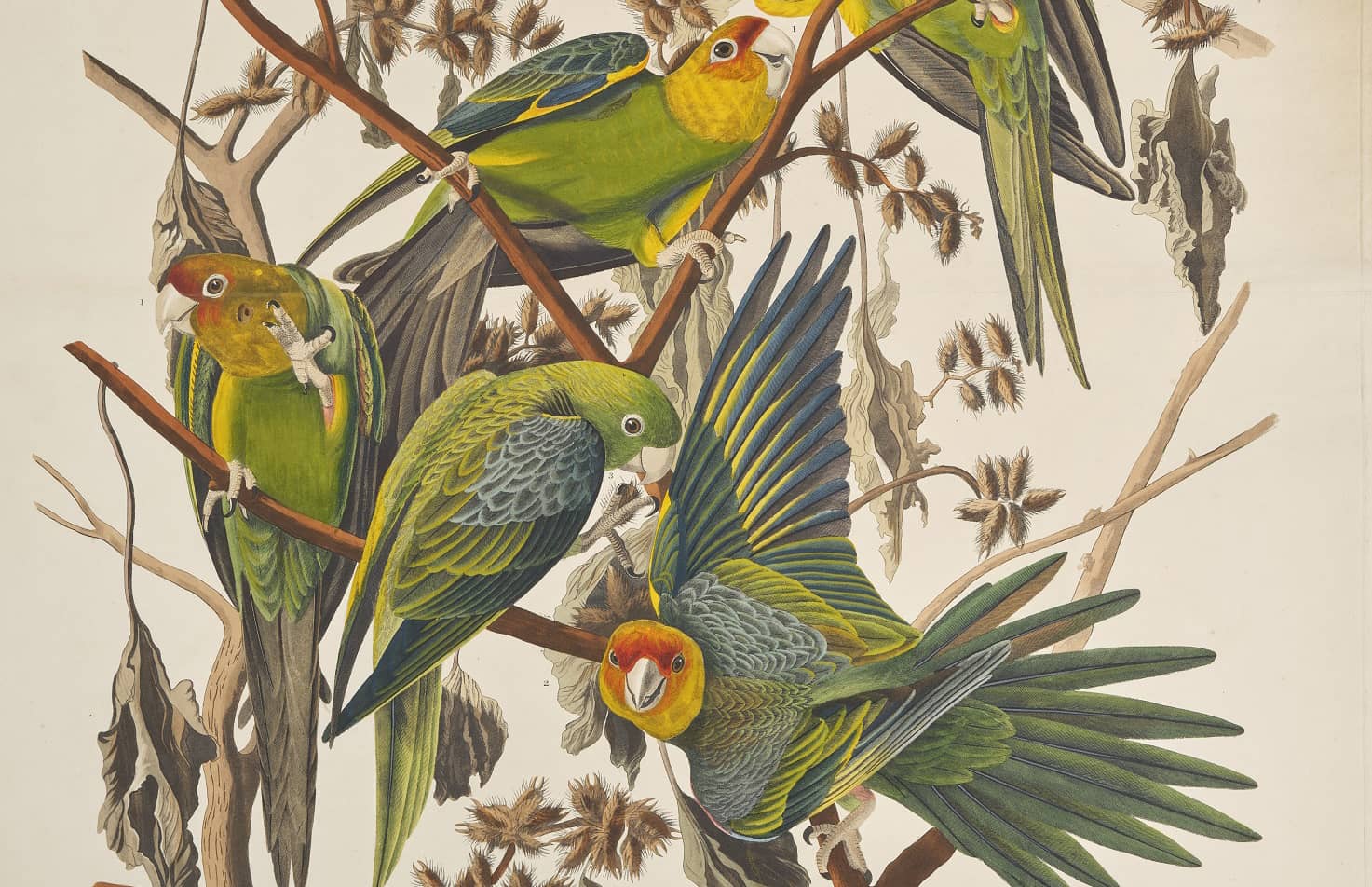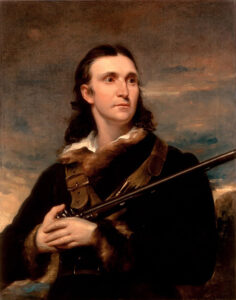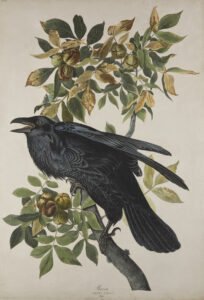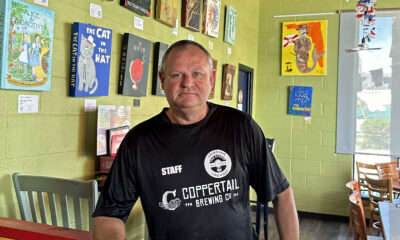Original Audubon prints on view at Museum of Fine Arts

New at the Museum of Fine Arts St. Petersburg is Audubon’s Birds of America, a collection of 46 prints on loan from the National Museums of Scotland.
In the early-to-mid 19th Century, John James Audubon – a French American born on the island now known as Haiti – revolutionized the way the world looked at birds. A self-taught naturalist and ornithologist, Audubon was also a self-taught artist, and his detailed drawings of hundreds of American species, depicted in their natural habitats, were – and are – both science and art.

Audubon, paining by John Syme. From the White House Historical Association.
“Normally,” said MFA Chief Curator Stanton Thomas, “when you see Audubon prints, they’re bound into a volume, or into a folio. You open one page, and you look at it. You open another page and look at it. But rarely do you get to see a whole array of them. So it’s very unusual to have them framed on a wall.”
In the wild, Audubon shot the birds he’d been observing, often dozens at a time, and posed them with wires in the natural positions he’d observed. He took copious notes throughout the entire process, detailing habitat, habits, feeding and breeding habits, plumage colors and variations and more.
In the decades before even the most primitive form of photography was commonplace, his attention to detail was revolutionary.
Audubon’s drawings were etched onto copper plates and printed on large sheets of paper, which were then hand-colored, according to his specifications.

Print depicting a raven (Plate 101) from Birds of America, by John James Audubon. © National Museums Scotland.
The individual plated prints of his book The Birds of America were sold as a subscription, five images at a time, between 1827 and 1838. They were intended to be carefully folded and placed in a folio.
“He was an ornithologist, but he had no degrees,” said Thomas. “No formal education whatsoever – not as an artist, and certainly not the sort of educational degree that would prove that he had the scientific background. Instead, all that he did was based upon his own study and observation.”
The American scientific community was skeptical. The ornithological drawings of the day were stiff and non-lifelike. People wondered what this Audubon character was up to. “Because it was so new and so exciting, they doubted a lot of what he was doing.”
In his native country, Audubon could not get funding.
“When he was unable to find a publisher in the United States, he went to Europe – one of the places he went was Edinburgh, Scotland, and the enlightened community there really embraced him. So that’s the reason they have so many prints.”

Detail of a print depicting duck hawks (pereguine falcons) (Plate 16) from “Birds of America,” by John James Audubon. Image © National Museums Scotland
Publisher William Home Lizars reportedly said, upon first laying eyes on the prints, “My God – I never saw anything like this before!”
His birds were eerily lifelike; they practically flew off the page. Some are squabbling; others are fighting over prey. “There’s some drama,” said Thomas. “This was all really new, and people were just electrified by it.”
Audubon’s Birds of America will be on view through Feb. 16, 2025.

Chief Curator Dr. Stanton Thomas. Photo by Bill DeYoung.







